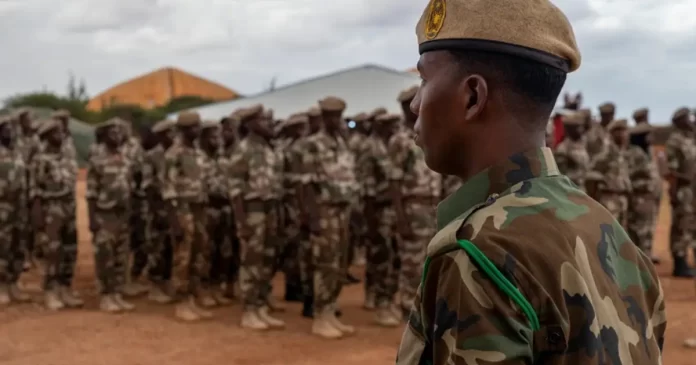Facebook Twitter (X) Instagram Somali Magazine - People's Magazine
UN report suggests Abdul Qadir Mumin may be Islamic State’s global caliph as the group decentralizes operations across Africa, Syria, and Afghanistan
A growing number of nations believe they have identified the leader behind the Islamic State’s global operations. A recent United Nations report, based on intelligence from member states, suggests there is increasing confidence that Abdul Qadir Mumin, who leads the IS branch in Somalia, is also the group’s global caliph.
Mumin’s role in IS operations has been well-known. Earlier U.N. reports indicated he was promoted to oversee IS affiliates across Africa. This shift appears to be a response to changing conditions in Iraq and Syria, where IS has had difficulty operating. The group has likely relocated key personnel to safer regions, moving towards a decentralized structure. Some intelligence agencies are skeptical, believing IS would not abandon its core strongholds. Others doubt the group would accept a leader who is not directly descended from the Prophet Muhammad, which was a traditional requirement.
Survival now seems to be the group’s priority. Since the deaths of Abu Bakr al-Baghdadi in 2019 and his successor in 2022, IS has hidden its leadership from public view. The group refers to its current leader only by an alias, Abu Hafs al-Hashimi al-Qurashi, which implies the necessary lineage. This secrecy helps obscure the leader’s true identity and origins.
If Mumin is indeed the current IS leader, he has already survived at least one assassination attempt. A U.S. airstrike in May 2024 targeted him, and since then, he has taken steps to reduce external exposure. His operations are based in Buur Dhexaad, a mountainous area in Somalia where a network of caves and defensive structures provide protection against airstrikes. However, this supposed stronghold was recently targeted again by U.S. forces, who claim to have killed a key IS operative, Ahmed Maeleninine, along with 13 others.
Under Mumin’s leadership, IS-Somalia has gained influence and strengthened its finances. The group has increased extortion activities in areas under its control and reinvested the money into military advancements, including drones for surveillance and attacks. However, growth has slowed because foreign fighters struggle to integrate into Somalia’s local clan-based system, and many face cultural and environmental challenges. Efforts to intercept foreign recruits before they reach Somalia have also hindered expansion.
Despite shifting leadership, IS has not abandoned its ambitions in Syria and Iraq. The group still commands between 1,500 and 3,000 fighters, with most based in Syria. The collapse of Bashar al-Assad’s regime in December 2024 has created new opportunities for IS. Some operatives took advantage of the chaos, with reports suggesting one infiltrated the al-Hol displacement camp and helped smuggle out experienced IS fighters by replacing them with teenage boys.
IS has also reactivated a brigade within al-Hol, responsible for intelligence gathering, recruiting young fighters, and managing finances. The group continues to launch sophisticated attacks on the U.S.-backed Syrian Democratic Forces. In Iraq, IS remains under pressure from counterterrorism efforts, including an operation in August that killed its deputy governor and 13 other leaders. Still, the group has been able to replace commanders and continue operations.
In Afghanistan, IS-Khorasan remains a major threat. The group has between 4,000 and 6,000 operatives and has taken advantage of local dissatisfaction, particularly among poppy farmers and ethnic Tajiks. Intelligence suggests IS-K has set up smuggling routes through Turkey and Iran to bring in more foreign fighters.
IS-K has also shown the ability to carry out attacks beyond Afghanistan, particularly in Europe. Intelligence reports indicate an increasing number of foiled plots, showing IS-K’s intent to carry out high-casualty attacks on European soil, especially in crowded areas and public spaces.
As IS continues to evolve and expand across multiple regions, counterterrorism efforts remain focused on disrupting its leadership, financial networks, and recruitment strategies. The group’s ability to adapt and persist despite setbacks remains a major concern for global security.

